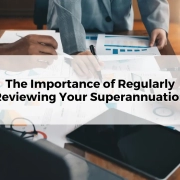Understanding the Government Co-Contribution Scheme
Table of Contents
ToggleThe Government Co-Contribution Scheme is an initiative by the Australian government aimed at enhancing the retirement savings of low and middle-income earners. By encouraging voluntary superannuation contributions, the scheme provides a financial boost to those who are eligible, helping them build a more secure financial future.
For many Australians, accumulating sufficient retirement savings can be challenging. The Co-Contribution Scheme is particularly beneficial for low and middle-income earners, providing a significant incentive to contribute more towards their superannuation. This additional support can make a considerable difference in achieving a comfortable retirement.
Eligibility Criteria
Income Thresholds
To qualify for the government co-contribution, your total income must be below the higher income threshold, which is adjusted annually. For the current financial year, the threshold is set at $57,016. Individuals with incomes below the lower threshold of $42,016 are eligible for the maximum co-contribution.
Age and Employment Status
Eligible participants must be under the age of 71 at the end of the financial year and must have at least 10% of their total income derived from employment or self-employment. This criterion ensures that the scheme targets those actively contributing to their retirement savings through their work.
Superannuation Contribution Requirements
To receive the co-contribution, you must make personal after-tax contributions to your superannuation fund. These contributions cannot be salary-sacrificed or made by your employer. Additionally, you must lodge your tax return for the relevant financial year.
How the Scheme Works
Contribution Matching by the Government
Under the scheme, the government matches personal superannuation contributions made by eligible individuals. The co-contribution rate is 50%, meaning for every dollar you contribute, the government adds 50 cents, up to the maximum co-contribution limit.
Maximum Co-Contribution Amount
The maximum co-contribution amount is $500, available to those earning $42,016 or less. As your income increases, the co-contribution amount gradually reduces, phasing out completely once your income reaches the higher threshold of $57,016.
Payment Process and Timelines
After you lodge your tax return, the Australian Taxation Office (ATO) assesses your eligibility and calculates the co-contribution amount. The payment is then made directly to your superannuation account. This process typically occurs within a few months of lodging your tax return.
Benefits of the Co-Contribution Scheme
Boosting Retirement Savings
The co-contribution scheme significantly enhances your superannuation balance, providing an immediate boost to your retirement savings. This additional contribution, combined with the power of compound interest, can grow substantially over time.
Tax Advantages
Contributions made under this scheme are after-tax, meaning they do not reduce your taxable income. However, the co-contribution itself is not taxable, providing a tax-free boost to your superannuation.
Encouraging Regular Contributions
The scheme incentivises regular contributions to your superannuation, fostering good savings habits. Consistent contributions, even small ones, can accumulate significantly over the long term, ensuring better financial security in retirement.
Making the Most of the Scheme
Strategies for Maximising Contributions
To maximise the benefits of the co-contribution scheme, aim to contribute the full amount that qualifies for the maximum co-contribution. Even if you cannot contribute the maximum, regular contributions can still attract partial co-contributions, enhancing your super balance.
Timing Contributions for Maximum Benefit
Making contributions early in the financial year can be beneficial, as it allows more time for your money to grow. Additionally, if your income is variable, planning contributions when your income is lower can help you maximise your eligibility for the co-contribution.
Case Studies and Examples
Consider a 30-year-old earning $40,000 annually. By contributing $1,000 to their super, they receive a $500 co-contribution. Over 35 years, with compound interest, this could significantly increase their retirement savings, demonstrating the scheme’s long-term benefits.
Common Misconceptions
Clarifying Eligibility Confusion
Many people mistakenly believe they are ineligible for the scheme due to misconceptions about income or employment status. It is crucial to review the eligibility criteria carefully and seek clarification if needed to avoid missing out on benefits.
Addressing Concerns about Access and Withdrawals
Some worry that additional super contributions might restrict access to their funds. While superannuation is intended for retirement, understanding the rules and planning accordingly can alleviate concerns about accessibility and ensure that contributions are beneficial.
Application Process
How to Make Personal Contributions
To participate in the scheme, make personal after-tax contributions to your super fund. This can typically be done via your super fund’s online portal, direct deposit, or BPAY.
Reporting Contributions to the ATO
Ensure you keep records of your contributions and report them accurately when lodging your tax return. This information is essential for the ATO to assess your eligibility for the co-contribution.
Receiving the Co-Contribution Payment
After processing your tax return, the ATO will calculate and pay the co-contribution directly into your super account. Monitor your super fund statements to confirm receipt of the payment.
Frequently Asked Questions
What Happens if My Income Changes?
If your income changes during the year, it can affect your eligibility for the co-contribution. Ensure you monitor your income levels and adjust contributions if necessary to optimise your benefits.
Can I Still Receive the Co-Contribution if I Have Multiple Jobs?
Yes, having multiple jobs can still allow you to qualify for the co-contribution, provided your combined income is within the eligible range and you meet the other criteria.
How to Track Co-Contribution Payments?
You can track your co-contribution payments by checking your superannuation account statements or logging into your super fund’s online portal. The ATO also provides details in their online services accessible through the MyGov portal.
The Government Co-Contribution Scheme is a valuable tool for low and middle-income earners in Australia to boost their retirement savings. By understanding the eligibility criteria, benefits, and application process, you can maximise the advantages of this scheme and secure a more comfortable financial future. Regular contributions, careful planning, and leveraging this government initiative can significantly enhance your superannuation, ensuring you are well-prepared for retirement.









